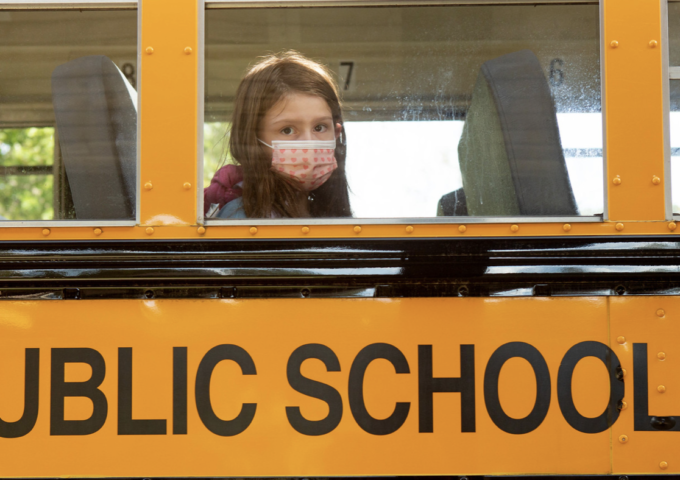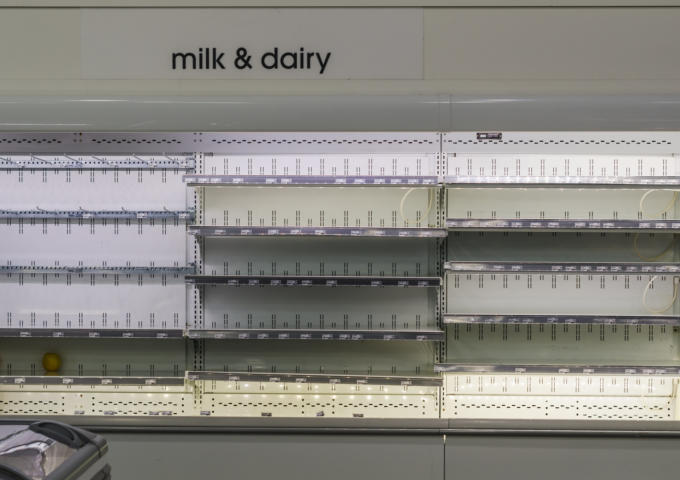Scientists are concerned that new COVID-19 variants popping up around the globe will evolve and could thwart the treatments they’ve developed.
Researchers are racing to develop new coronavirus vaccines and treatments, but many of them are running into a problem – a shortage of monkeys. Unless the government acts to preserve our scientists’ access to nonhuman primates, medical advancement could grind to a halt.
Monkeys are essential for biomedical research. They’re the most similar nonhuman models to human research subjects. Rhesus macaques, the species most commonly engaged in medical research, share roughly 93 percent of their DNA with humans.
In the case of COVID-19, scientists were able to glean how the coronavirus attacked the lungs and respiratory system by studying its expression in monkeys. It’s no wonder the vaccines Moderna, Pfizer/BioNTech, and Johnson & Johnson developed all have their genesis in research in nonhuman primates.
But the pandemic has made nonhuman primates a scarce resource. At the beginning of the outbreak, China, the world’s top source of research monkeys, halted exports. That put many U.S. labs in a difficult spot. China provided more than 60 percent of the nearly 34,000 nonhuman primates that entered the United States in 2019.
China probably won’t resume exports anytime soon, since its own scientists now face a shortfall. Just a few labs in Shanghai alone need nearly 3,000 more monkeys. Experts predict the Chinese shortage will grow 15 percent a year over the next five years.
The message propagated by animal rights activists is that nonhuman primates are not essential for the development of COVID-19 vaccines. Heeding their propaganda could spell disaster for the health and safety of Americans.
The U.S. government has a few options for addressing the research monkey shortage. It could work with other countries to increase the supply. The promise of more collaboration with U.S. scientists could prompt other countries to export more of them to the United States.
Officials could also pressure airlines to transport more monkeys from abroad. Most have bowed to pressure from animal rights groups and refuse to transport research animals.
Correcting misinformation about animal research would also help. PETA and other animal activists have been trying to convince the public that research with monkeys is not just useless but inhumane and unethical.
One solution may be to boost funding for primate research in America. Tens of millions of additional dollars represents a rounding error in the federal budget. But that investment would ensure U.S. scientists can quickly respond to future health crises.
The mRNA technology employed by Moderna and Pfizer/BioNTech and the viral vector technology used by Johnson & Johnson show potential against other diseases like cancer, multiple sclerosis, HIV/AIDS, and even future coronaviruses. Repurposing these vaccines for other diseases will require additional research in nonhuman primates.
The world looks to the United States as a leader in medical innovation. If our scientists are to continue producing life-saving therapies, America will need to address our shortage of research monkeys.
Matthew R. Bailey is president of the Foundation for Biomedical Research. This piece originally ran in the Detroit News.
____________________
Access to digital platforms critical to state’s recovery
As Pennsylvania reopens this summer, it’s crucial that local communities and businesses are supported throughout the process. This includes protecting their access to key tools and services, like digital platforms.
At GSD Solutions, we’re a virtual event production company, and we have seen firsthand how critical technology has been, especially over the past year. When COVID-19 hit, demand for our services skyrocketed, and we have since helped dozens of clients host webinars and grow their online presence. Even with in-person events returning, companies are still interested in digital engagement because it’s affordable and provides a higher return on investment.
The accessibility of internet-enabled services has been especially helpful for minorities and marginalized communities, who were disproportionately affected during the pandemic. According to the Federal Reserve Bank, almost half of all Black-owned small businesses shuttered their doors by April 2020. But free digital systems – many of which we utilize as well – have allowed countless others to stay afloat and helped us all level the playing field.
As tech-related policy discussions continue to pick up among lawmakers on topics including how they moderate online content, we should hope that they can keep the small business perspective in mind. The current landscape of services, platforms, and surrounding policies has provided critical infrastructure for our operation and countless others and will only be more critical in the months ahead.
Georgie-Ann Getton | GSD Solutions
____________________
Free community college would help the U.S.
“Do we want to give the wealthiest people in America another tax cut,” asked Joe Biden, “or do you want to give every high school graduate the ability to earn a community college degree?”
The president’s question was not rhetorical. He was speaking at an event to promote his American Families Plan, which includes spending that would enable Americans to attend free two-year community college. Sen. Bernie Sanders and Rep. Pramila Jayapal have introduced a similar bill in Congress. The proposals aren’t short of support: 83 percent of Democrats back free public college and university, as do 39 percent of Republicans.
The announcement elated Biden’s own party, even as it raised Republican objections. The reaction of both sides was predictable. Free community college is a pillar of the progressive agenda. By contrast, Republicans in Congress won’t support the measures because of their significant cost.
This divide is unfortunate. Free community college should be viewed not as a partisan issue, but as an investment that will yield future returns in the form of economic growth. The bottom line: free community college will pay for itself in the long run.
The best jobs require more than a high school diploma. A high school graduate makes $39,000 a year on average, a figure that jumps to $46,000 with an associate degree. That’s almost $300,000 more in earnings over a 40-year career. But nearly 30 percent of Americans over age 25 lack higher education.
Republicans are right that a federal program won’t be cheap. Biden’s plan calls for $109 billion to pay for free, two-year degrees. But that’s peanuts compared to what America will lose in economic output should our skill levels stagnate. A lack of workers with associate or bachelor degrees will cost America $1.2 trillion in economic output over the next decade.
The lost output occurs when employers can’t fill jobs that need the specialized training higher education provides. Even with record unemployment last year, employers have 8.1 million jobs left unfilled.
Employers struggle to find workers with the right mix of technical and soft skills. Some reports show that 83 percent of bosses can’t find the right candidates. Three-quarters believe that applicants don’t have skills they’ll need on the job.
Free community college can help close the skills gap by preparing students for the jobs of the future. In 2019, community colleges granted a million associate degrees and certificates. Nearly 60 percent of associate degrees and 94 percent of certificates were for health care, IT, business, computer science, and construction trades.
Those skills can help workers succeed outside of the traditional office. Freelance job openings have skyrocketed amid the pandemic, and nearly 70 percent of remote workers say they’re open to such an opportunity. Some of the fastest-growing positions involve accounting, data analytics, and health care.
It’s understandable that fiscal conservatives object to proposals for free four-year degrees. A degree in film studies or liberal arts majors may not give workers tangible skills they’ll need on the job. But investment in community colleges is different. It’s a cost-effective use of federal dollars, a “bridge-loan” that recipients who otherwise wouldn’t go on to higher education will pay back many times over in higher income taxes and increased productivity.
Nearly a dozen states already recognize the benefits of free two-year college. It’s time the federal government jumped on board.
Brent Messenger is vice president of public policy & community engagement at Fiverr. This piece originally ran in The Hill.




